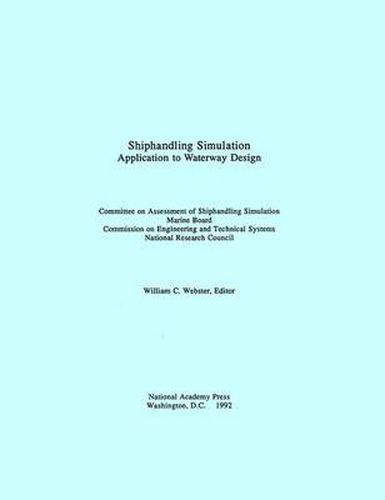Readings Newsletter
Become a Readings Member to make your shopping experience even easier.
Sign in or sign up for free!
You’re not far away from qualifying for FREE standard shipping within Australia
You’ve qualified for FREE standard shipping within Australia
The cart is loading…






As a result of major shipping disasters on all coasts, the safety of vessel operations in U.S. ports and waterways and the effectiveness of waterway designs are under increased scrutiny. But are traditional waterway design practices that rely heavily on rules of thumb and conservatism providing adequate margins of safety while keeping the overall costs of waterway projects within the funding capabilities of local project sponsors? Shiphandling Simulation addresses how computer-based simulation can be used to improve the cost-effectiveness of waterway design, while satisfying safety objectives. The book examines the role of computer simulation in improving waterway design, evaluates the adequacy of data input, explores the validity of hydrodynamic and mathematical models, assesses required and achievable accuracy of simulation results, and identifies research needed to establish shiphandling simulation as a standard design aid. Case studies of waterway design efforts employing shiphandling simulation are analyzed and lessons learned are identified.
$9.00 standard shipping within Australia
FREE standard shipping within Australia for orders over $100.00
Express & International shipping calculated at checkout
As a result of major shipping disasters on all coasts, the safety of vessel operations in U.S. ports and waterways and the effectiveness of waterway designs are under increased scrutiny. But are traditional waterway design practices that rely heavily on rules of thumb and conservatism providing adequate margins of safety while keeping the overall costs of waterway projects within the funding capabilities of local project sponsors? Shiphandling Simulation addresses how computer-based simulation can be used to improve the cost-effectiveness of waterway design, while satisfying safety objectives. The book examines the role of computer simulation in improving waterway design, evaluates the adequacy of data input, explores the validity of hydrodynamic and mathematical models, assesses required and achievable accuracy of simulation results, and identifies research needed to establish shiphandling simulation as a standard design aid. Case studies of waterway design efforts employing shiphandling simulation are analyzed and lessons learned are identified.